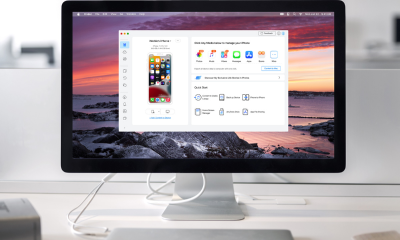Investing
Why are Collective Investment Trusts in Your Portfolio?

Every month, millions of working Americans save a portion of their paycheck into some form of retirement savings account such as a 401(k), 403(b), or IRA. While there are a lot of investment vehicles, do you know the type that your 401(k) account is being held in? If you’re saving in your employer-sponsored account, your Plan’s Fiduciaries are responsible for providing and monitoring a diverse investment menu. However, you hold the power to determine how much you want to contribute and where based on the available funds within your plan. One type of retirement investment vehicle that has been quickly growing in popularity are Collective Investment Trusts (CITs). So, what sets them apart from mutual fund investment vehicles?
What is a CIT?
CITs are a particular saving vehicle used in investment menus offered in retirement plans. Simply, it’s a way to give individual investors inside their 401(k) plan the purchasing power of large institutions, better pricing, and more competitive investment opportunities. CITs are essentially the “Costco” or “Sam’s Club” of the investment world. They are sponsored by a bank or trust company and are regulated by the Office of the Comptroller of the Currency.
What Makes CITs Unique?
All investment funds are regulated in one way or another, but CITs are regulated by the Office of the Comptroller of Currency, and as a result have fewer regulatory restrictions and also might have more leeway to invest in alternatives like hedge funds, commodities, real estate, and high-yield bonds. While they are commonly compared to another investment called mutual funds, CITs do have distinct differences. For example, CITs are usually cheaper, have more flexibility, and have fewer distribution costs compared to mutual funds. For retirement plans, we recommend using CITs that closely mirror the mutual fund version of the same investment strategy.
CITs are not for everybody, so if you do not see it in your plan’s investment line-up, don’t fret. It just means your Plan Fiduciaries determined that a CIT was not a prudent choice for your plan. When your company is considering adding investment options they’ll weigh pros and cons and determine which best aligns with the employee’s overall needs. Additionally, not all financial institutions offer CITs for their strategies.
CITs are just, one piece to your Plan’s investment menu offering. We encourage you to check out other resources on MoneyNav to learn more about how various investment strategies work and identify a mix that’s right for you.
Read the full article here

-

 Side Hustles5 days ago
Side Hustles5 days agoHow to Create a Unique Value Proposition (With Tips & Examples)
-

 Side Hustles5 days ago
Side Hustles5 days agoThe DOJ Reportedly Wants Google to Sell Its Chrome Browser
-

 Investing4 days ago
Investing4 days agoAre You Missing These Hidden Warning Signs When Hiring?
-

 Make Money4 days ago
Make Money4 days ago7 Common Things You Should Never Buy New
-

 Investing6 days ago
Investing6 days agoThis Founder Turned a Hangover Cure into Millions
-

 Investing1 day ago
Investing1 day agoThis All-Access Pass to Learning Is Now $20 for Black Friday
-

 Passive Income1 day ago
Passive Income1 day agoHow to Create a Routine That Balances Rest and Business Success
-

 Investing4 days ago
Investing4 days agoGoogle faces call from DuckDuckGo for new EU probes into tech rule compliance By Reuters


















